Tripods & Grips
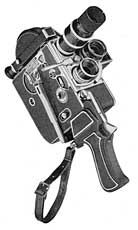 Trigger Handle
Trigger Handle
The Paillard Bolex trigger handle was available by 1950 for the Bolex H camera.
It attaches to the tripod socket of the camera, and allows the release button
to be operated from a trigger lever on the grip; a leather wrist strap is
attached to the rear. Later models have the Paillard Bolex logo cast
into the top side of the grip.
Surefire Grip
1954 -- This unique grip is fitted with a thumb-operated cable release.
The grip is screwed into the tripod socket and held securely by a lug which
fits into an angled slot located on the camera base. The H-16 Supreme and
later model H cameras were designed with this slot already cut into the base.
However, cameras manufactured earlier than 1954 were unable to use this grip
without modification.
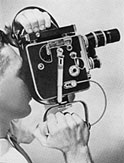
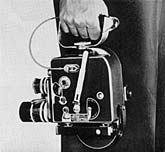
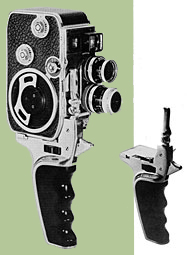 Declic Handle
Declic Handle
This grip was introduced in 1958 and was designed for use with C-8 and B-8
cameras. It is not compatible with later model 8mm cameras, as the spring-loaded
trigger can only operate a front located release button. It's constructed
of metal and finished in chrome; finger grips are molded in plastic.
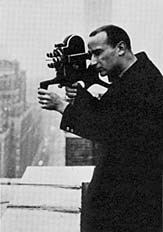 Gunstock Grip
Gunstock Grip
The Gunstock Grip was based on a design from Dr. Andras Laszlo. In the Christmas
1951 issue of the Bolex Reporter, he wrote about his filming expedition
to Africa and briefly described his self-designed grip. It was intended to
provide steady camera support while filming with telephoto lenses by offering
"perfect three-point contact between shoulder, cheek bone and left hand".
[1] 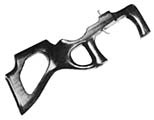
1 Dr. Andras Laszlo, "Bolex Safari," Bolex Reporter, Christmas 1951, 15.
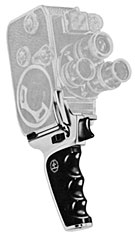 Declic D Grip, for the D-8L
Declic D Grip, for the D-8L
The Declic D was introduced in 1959, for use with the D-8L. Later 8mm models
with release buttons located on the side, including the P1 through P3, can
also use this grip. The bottom of the grip contains a 1/4" thread socket that
allows it to be mounted to a tripod, as well as permitting the attachment
of an accessory wrist strap.
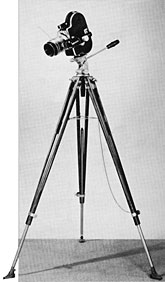 Bolex Precision Tripod
Bolex Precision Tripod
1953 -- The first model of tripod available from Paillard Bolex was
constructed from aluminum with wooden legs. The pan head contained a built-in
spirit level and detachable camera base. Pan and tilt was adjusted with a
handle, while separate knobs allowed movement of each to be locked. The wooden
tripod legs were kept stationary by a support chain and could be adjusted
individually. Fully extended, the height was approximately 57" (64" from the
floor to the viewfinder when a camera was attached). A circular Paillard Bolex
logo was embossed on the top of the camera base. Priced at $79.50, in the
Spring 1953 issue of the Bolex Reporter
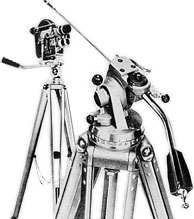 Paillard Bolex Tripod H
Paillard Bolex Tripod H
This model, constructed entirely of aluminum, was introduced in 1959. The
first head supplied with this tripod included a "plug-on" style platform which
attached to the camera. [2]
Later versions (pictured here) included a quick release disc, similar to those
found on the Declic H grip. A pan-handle was available to accomodate a 21"
cable release and could be adjusted for left or right handed use. The head
contains a built-in spirit level and allows 360 degree panning and 135 degree
tilt, with an engraved degree scale. This version weighs approximately 8 lbs
and 6 ounces, with an extended height of 61" (37" when retracted). Price in
1959: $99.50
2 "What's New At Bolex," Bolex Reporter, Fall 1959, 30.
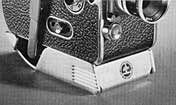 Flat Base Adapter
Flat Base Adapter
1956 -- Attached to the underside of 'round' base H-8 and H-16 cameras,
this support allowed the camera to be mounted on a tripod or balanced on a
flat surface. The base was made of polished aluminum and contoured to the
bottom of the camera with open space provided for the winding handle. Felt
or cloth lining inside the base protected the camera body from scratches.
All bases were adjustable to accept either 1/4" or 3/8" thread tripod screws.
Later models were finished in a matte black color to avoid unnecessary light
reflection.